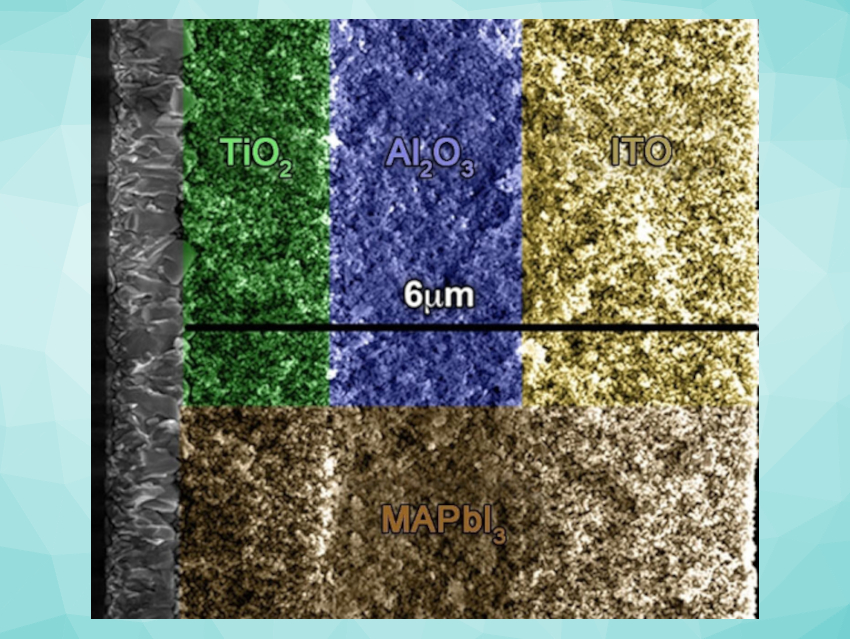Harnessing solar energy more efficiently is important for combatting climate change. Perovskite solar cells (PSC) have promising photovoltaic performance, surpassing other technologies based on solution-processed materials. However, the need for expensive components such as organic hole transporting layers and precious-metal-based back contacts (e.g., gold) hinders their large-scale use. Therefore, the future of PSCs is expected to be in tandem configurations with other, well-established solar cells. The development of a PSC architecture containing a transparent current collector, which also acts as a hole collector, would, thus, be useful for the photovoltaic industry.
M. Ibrahim Dar, École Polytechnique Fédérale de Lausanne (EPFL), Switzerland, and University of Cambridge, UK, and colleagues have developed a fully screen-printable, hole-transport-material-free, Au-free PSC architecture that is semi-transparent in the infrared (IR) region, which is desirable for tandem solar cells. The structure contains a mesoporous layer of TiO2 (pictured in green) as an electron conductor, a mesoporous spacer layer of Al2O3 (pictured in blue), and a mesoporous indium tin oxide (ITO, pictured in yellow) top layer. The three mesoporous layers were screen-printed onto fluorine-doped tin oxide (FTO)-coated glass. The perovskite (methylammonium lead iodide, MAPbI3, pictured in gold) is infiltrated into the mesopores of the scaffold.
The scaffold allows for a maximum transmittance of up to 80 % for light in the range of 500–1100 nm before infiltration. The simplicity of the device structure could make scale-up and commercialization feasible.
- A Fully Printable Hole‐Transporter‐Free Semi‐Transparent Perovskite Solar Cell,
Amina Saleh, Norman Pellet, Shaik Mohammed Zakeeruddin, M. Ibrahim Dar, Michael Grätzel,
Eur. J. Inorg. Chem. 2021.
https://doi.org/10.1002/ejic.202100544



